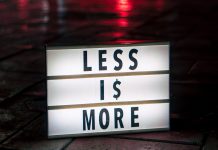There is an adage that “first impressions count”.
The TV character Harvey Specter in the legal drama “Suits” commented to his offsider, “People respond to how we’re dressed.” Whether it be personal appearance, the workplace or a digital profile, humans instinctively make a judgement in a very short timeframe. As I reflect upon this topic I begin to realise that the power of the senses to perceive, analyse and categorise is phenomenal. In a corporate capacity, this leads to the question of the impact of the reception area of a workplace on visitors, customers and future employees.
Colour
Countless studies have been undertaken on the psychological impact of colour. Munsell’s (1912) work stated that colour contained three components, hue, value and chroma. In other words, the overall name of the colour (eg red, green, blue), the brightness and the saturation. When someone walks into your office reception area what are they seeing? What is the overall dominant colour, how light or dark is it and how vivid is the particular colour? Valdez & Mehrabian (1994) assessed a variety of studies and ranked blue as the most preferred colour, with the brighter and more saturated blue eliciting the greatest pleasure.
Thin Slicing
Thin slicing refers to the small (or thin) interactions that we have in which a judgement is made. Ambady et al (2000) claims that thin slicing has the tendency to be immediate, automatic and quite often valid based on our initial judgements. Whilst traditionally thin slicing has referred to the perceptions we make about individuals, the psychology of consumerism has indicated that branding and digital presence are also affected by thin slicing. Our immediate judgement when looking at a website or at a product on a shelf are often immediate and accurate. The same when walking into an office space. The reaction we have when entering a physical environment can be long lasting. Organised, engaging, bright and professional areas affect an individual’s initial reaction in a different manner to dark, crowded and drab areas. Is it always a valid reflection of the company? No, however, research indicates that the physical reception area is a representative of the brand and as such captures the emotions of the visitor, customer or contractor.
Physical Layout
Medical facilities are investing heavily in planning, designing and restructuring welcome and reception areas to accommodate the ever changing needs of the health consumer. Large sterile medical receptions are being altered to facilitate designs that will reduce and lessen anxiety and create a more positive atmosphere. More importantly, studies have indicated that the waiting room environment is perceived as indication of the quality of healthcare provided (Arneill and Devlin 2002). Considering my childhood GP was a highly accredited and skilled medical practitioner who had a waiting room full of old magazines and primitive wooden blocks should I be worried about my vaccinations? Logically no, but from a psychological perspective, definitely.
The same can be said of a corporate reception area. Practical, comfortable and welcoming reception areas are vital. The initial impressions on a visitor are significant and should never be underestimated. A simple method of welcome and an impressive design is vitally important. Research has shown that potential employees make judgements about a company when waiting in reception area, often asking that simple question of, ‘‘do I want to work here based on what I see in the reception? ‘(Park 2005)
What does this all mean to business?
The demands of business are phenomenal. From recruiting staff to generating long term customers, the varying pressures placed on organisations to grow and develop is considerable. The psychology of consumerism tells us that the initial impact of a brand, a colour, a physical layout and a welcoming employee can never be understated. First impressions do count. The overall appearance of a work environment, the utilisation of technology and the layout and design of a reception area have an immediate and long lasting impression. It is worth the effort to get it right and to have a competitive advantage within the marketplace. As Tesla CEO Elon Musk said, “Brand is just a perception, and perception will match reality over time. Sometimes it will be ahead, other times it will be behind. But brand is simply a collective impression some have about a product.”


































